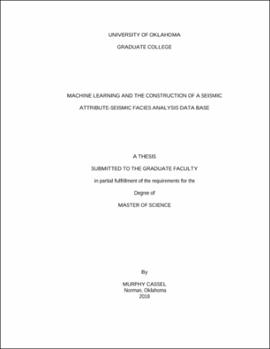| dc.description.abstract | Currently, seismic facies and structural analysis requires a significant amount of time and effort by skilled interpreters. With the advances made by companies such as Amazon and Google with AI (artificial intelligence) and machine learning, many geoscientists (and perhaps more so, many geoscience managers) have identified the application of such technologies to the seismic interpretation workflow. Advancements of such technologies, such as machine learning based interpretation like self-organizing maps (SOM), principle component analysis (PCA) and independent component analysis (ICA), will both accelerate and quantify the seismic interpretation process.
Seismic attributes highlight subtle features in the seismic data that help identify architectural elements that can be used to further define the environment of deposition. Likewise, seismic attributes delineate subtle faults, folds, and flexures that better define the history of tectonic deformation. However, the understanding of “which attribute best illuminates which feature” requires either considerable experience or a tedious search process over years for published analogues. The objective of this thesis is to identify the seismic facies of interest through a prototype a web-based seismic attribute-seismic facies analysis database that can be used not only as a guide for human interpreters, but also to select attributes for machine learning. I propose a rule-based decision tree application that suggests which attributes are good candidates for machine learning applications.
There are many seismic facies. This thesis illustrates the objectives and a prototype web application using only two seismic facies: marine mass transport deposits and karst collapses. After initial validation, this product can then be improved and expanded upon by a larger user community to provide an interactive attribute selection platform for interpreters at large. | en_US |
